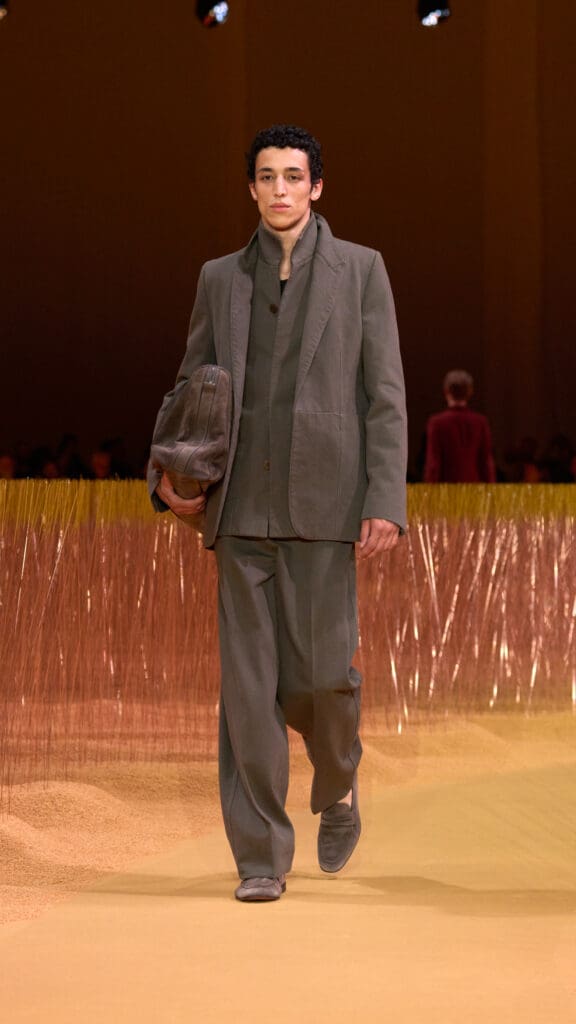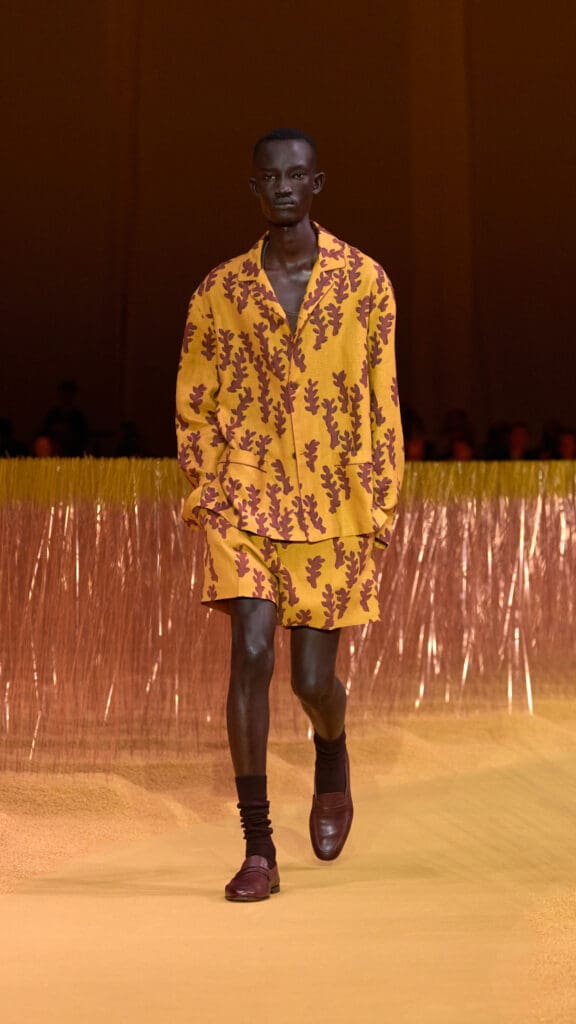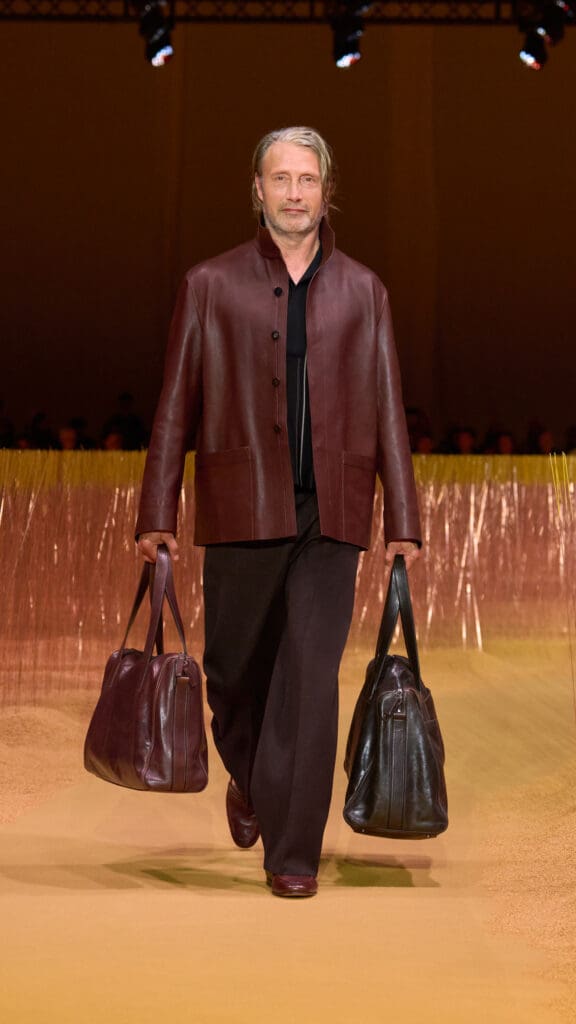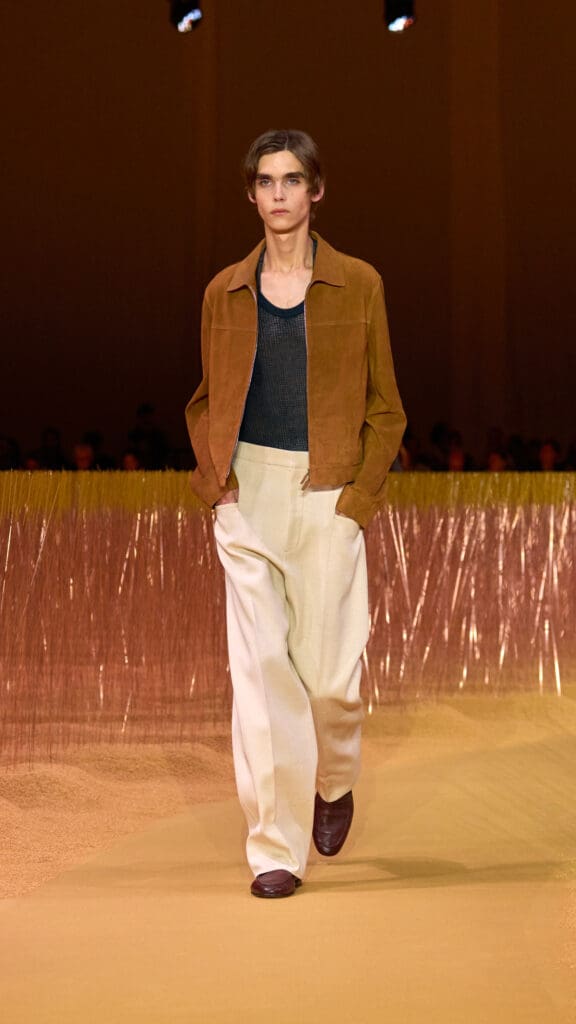In a big shift, Alessandro Sartori bets on firm perspectives on soft ground for Zegna’s SS25 collection. Still, it made for compelling craft.
GOD BLESS the uniform.
Recent years have produced a profusion of young designers that have zeroed in on it, turning out entire collections of wardrobe mainstays in their very own vernaculars. Among the more compelling talents who adhere to that sensibility is Alessandro Sartori, whose louche, perfectly imperfect offerings remain regrettably undersung.
Sartori specialises in fluid-like pieces with a covetable, du jour rakishness to them. To wit, Spring’s overcoats and jackets enveloped their volumes, while elongated blazers draw a tall line on the hems–though no doubt his man is versatile enough to adapt to whatever he pulls on.
While Sartori’s league of breezy-leaning looks might be good enough to convert even the most die-hard sportswear aficionado, Spring bore a goodly shot of soft, unfussy modern appeal.



“I wanted to direct this lineup to elements that felt quintessentially Italian—through prints, colours and shapes,” offered Sartori backstage post-show. “There’s a development of hyper-light materials that are solid to the touch, and this season we introduced wrinkle-free linen for the first-time ever; a huge section of tailored pieces was done in incredible iterations of the fabric, coming from an exclusive treatment done in Ermenegildo Zegna’s woolmill in Trivero,” he continues.

On closer inspection, undeniable tailoring chops showed a hard combo to resist: titled Us, in the Oasi of Linen, his SS25 outing experiments with shapes and an attitude of defining a wardrobe that is a distillation of what summer truly looks like, clothing-wise.
“[Linen] is something that has the freedom to define our DNA and that makes the ZEGNA man inclusive: I wanted to make men look better, staying true to themselves.” In fact, he adds, “this season we had everyone from teenagers to people in their seventies in the show, and I wanted to showcase how eclectic and modern clothing can feel.”


There is something new in Sartori’s process, too. “When we were having fittings, we used real people and not models because we were keen on a sense of future imminence, and of what happens in reality afterwards: so these staples are what you find in stores and what a customer can buy.”
The fine finishing, softly dashing fabrics, and overall minutiae were slightly lost in context if looked at from afar, but are impressed upon you right away on seeing Sartori’s wares in person (case in point: the printed polos worn with matching shorts in all manner of neutral hues were a pleasing delight, which had motifs inspired by the label’s latest book Born in Oasi Zegna, published by Rizzoli New York).



Fabrications, on the whole, turned up the wow factor, too, which illuminated the innateness that seems to gush into every garment, from staples like easy pull-on pants and structured toppers to more out-out sensual pieces like Spring’s mesh tops.
Perhaps the coolest look of the bunch was what Sartori dubbed his “Malleable number”: a long, roomy jacket meant as a gilet presented in a sleeveless style. Team it with one of his new loafers (socks optional) and prepare to turn heads.
by Chidozie Obasi
